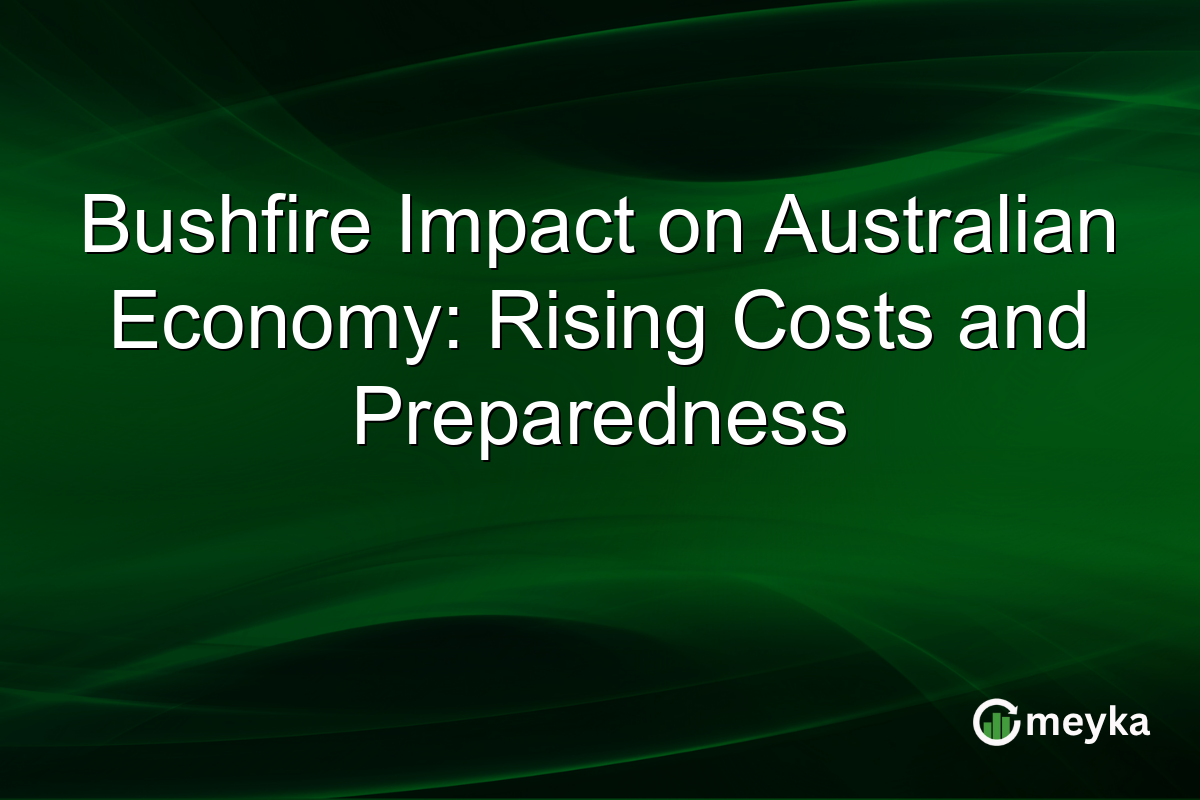Bushfire Impact on Australian Economy: Rising Costs and Preparedness
Bushfires have become a profound concern for Australia’s economy, posing substantial threats to infrastructure, agriculture, and insurance. The rising frequency and intensity of these fires are not just an environmental crisis but an economic one, impacting the stability and growth of the Australian economy in 2025. Understanding these financial ramifications and enhancing preparedness are critical to mitigating damage and ensuring rapid recovery.
The Economic Cost of Bushfires
Bushfires are rising in frequency, putting a hefty price tag on the Australian economy. In recent reports, the economic impact has been estimated to cost billions in infrastructure damage alone. The 2019-2020 bushfire season, for instance, resulted in losses exceeding $10 billion, with current projections expecting similar, if not greater, impacts in 2025. These costs encompass the destruction of public infrastructure, private properties, and key economic activities like agriculture.
The agricultural sector, contributing significantly to Australia’s GDP, faces devastating crop damages and livestock losses due to fire events. This analytic understanding underscores the necessity for stringent government policies and improved community awareness to manage and mitigate the economic fallout of bushfires effectively.
See related updates at https://www.rfs.nsw.gov.au/fire-information/major-fire-updates.
Insurance and Economic Strain
Insurance costs linked to bushfire damages are a growing concern. As fires become more intense, insurance premiums soar, affecting business profitability and individual affordability. Insurers have reported claims exceeding $1.9 billion post major fire events, reflecting the burgeoning pressure on both insurers and policyholders.
The economic strain also extends to recovery processes, where government funds allocated for relief could instead fuel other economic growth sectors. This financial pressure necessitates a deeper understanding of risk assessment and recovery funding, ensuring that future bushfire events become less economically disruptive, safeguarding both the public and private sectors financially.
Bushfire Preparedness: A Necessary Investment
Enhancing bushfire preparedness is a critical strategy to mitigate the economic impact. Investments in fire management, early warning systems, and community education have proven effective. Recent government initiatives have seen an increase in funding toward bushfire management plans, emphasizing prevention and rapid response.
For 2025, the focus on bushfire preparedness involves increased collaboration between government bodies and local communities. This collaboration strives to reduce the severe economic impacts through shared resources and knowledge. Proactive measures are not just about saving lives but also about preserving economic stability in an increasingly fire-prone country.
Discover current fire locations and updates at https://www.rfs.nsw.gov.au/fire-information/fires-near-me.
Final Thoughts
The recurring nature of bushfires poses undeniable challenges to Australia’s economy. With the potential to disrupt infrastructure and agricultural output significantly, the financial repercussions are broad and long-lasting. The rising costs reflect the urgency for innovative policies and robust preparedness strategies that protect both the economy and communities. Investments in fire management and education stand as pivotal components for minimizing future economic impacts. Ultimately, aligning government and community efforts will be crucial in building resilience against this evolving threat, helping to safeguard Australia’s economic future in the coming years.
FAQs
Bushfires affect the economy by damaging infrastructure, reducing agricultural productivity, and increasing insurance costs, which collectively lead to significant financial losses and economic disruption.
Fire management costs include funding for early warning systems, firefighting resources, and community preparedness programs, with government expenditure rising significantly each season to address these needs.
Effective preparedness helps minimize economic losses, protect lives and property, and maintain economic stability by reducing the severity and impact of bushfires through preemptive measures and community education.
Disclaimer:
This is for information only, not financial advice. Always do your research.






